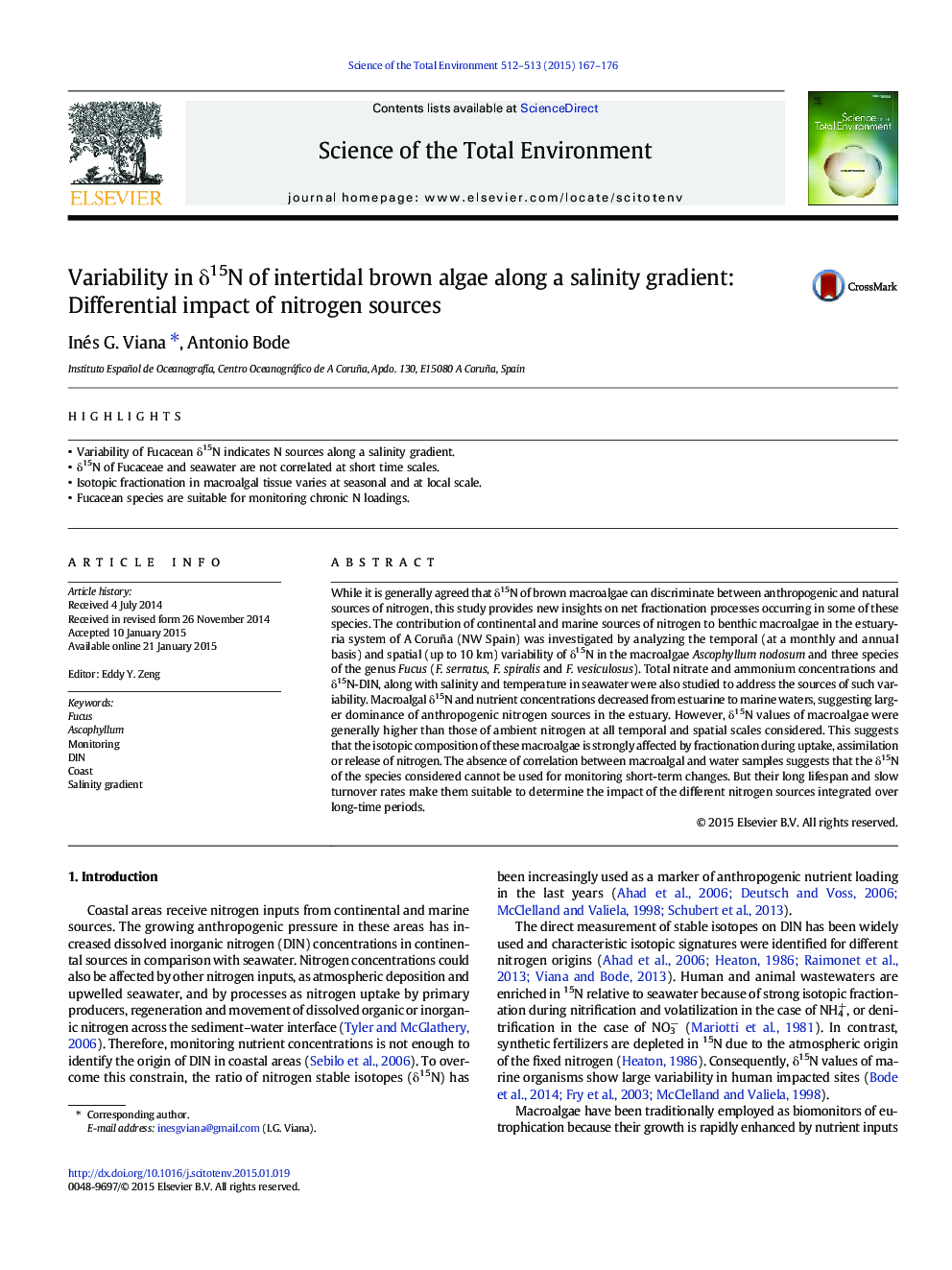| Article ID | Journal | Published Year | Pages | File Type |
|---|---|---|---|---|
| 6327167 | Science of The Total Environment | 2015 | 10 Pages |
Abstract
While it is generally agreed that δ15N of brown macroalgae can discriminate between anthropogenic and natural sources of nitrogen, this study provides new insights on net fractionation processes occurring in some of these species. The contribution of continental and marine sources of nitrogen to benthic macroalgae in the estuary-ria system of A Coruña (NW Spain) was investigated by analyzing the temporal (at a monthly and annual basis) and spatial (up to 10 km) variability of δ15N in the macroalgae Ascophyllum nodosum and three species of the genus Fucus (F. serratus, F. spiralis and F. vesiculosus). Total nitrate and ammonium concentrations and δ15N-DIN, along with salinity and temperature in seawater were also studied to address the sources of such variability. Macroalgal δ15N and nutrient concentrations decreased from estuarine to marine waters, suggesting larger dominance of anthropogenic nitrogen sources in the estuary. However, δ15N values of macroalgae were generally higher than those of ambient nitrogen at all temporal and spatial scales considered. This suggests that the isotopic composition of these macroalgae is strongly affected by fractionation during uptake, assimilation or release of nitrogen. The absence of correlation between macroalgal and water samples suggests that the δ15N of the species considered cannot be used for monitoring short-term changes. But their long lifespan and slow turnover rates make them suitable to determine the impact of the different nitrogen sources integrated over long-time periods.
Related Topics
Life Sciences
Environmental Science
Environmental Chemistry
Authors
Inés G. Viana, Antonio Bode,
